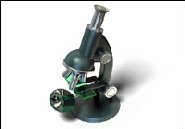Every 30 minutes a diabetic patient loses the use of a limb due to the ulceration of tissues that degenerates into a necrosis, a typical side effect of the disease. Thus, finding a proper treatment to arrest this complication is one of the main priorities of scientists studying diabetes.
Dr Paolo Madeddu from the University of Bristol, in a collaborative effort with colleagues from the Istituto Besta in Milano and European Vascular Genomics Network (EVGN) scientists from INSERM U441 in Bordeaux, has devised an experimental model based on the administration of Vascular Progenitor Cells (VPC). In laboratory tests, this model proved to be effective on ischemic diabetic ulcers. The research was presented at the Annual EVGN Conference in Toulouse.
As these data are still preliminary, the applications of these results to man are still far in the future. However, these extremely encouraging results prompted the scientist to start a whole set of new experiments aimed at the characterization of the compounds secreted by the VPCs, which are responsible for their healing properties on diabetic ulcers.
Ischemic ulcers are lesions that damage the deepest layers of tissues
Diabetes is a social disease that affects several million people worldwide. The ischemic ulcers it causes are lesions that damage the deepest layers of tissues, markedly reducing muscle and bone functions. Quite often, they generate infections that aggravate the conditions of already compromised patients.
It has been a few years since scientists developed an interest in the therapeutic potential of stem cells for the treatment of diabetic ulcers. In this study, however, Dr Madeddu and colleagues used so-called Vascular Progenitor Cells. These cells have not been fully characterized yet but scientists know that they display a considerable regenerative potential in the vascular environment. Besides, they are able to counteract cellular suicide, or apoptosis.
A major objective of the study was the creation of a diabetic model that allowed the researchers to test the regenerative capacities of VPCs. Then they administered a specific subpopulation of VPCs and, a week after the treatment, checked the overall effect on the ulcers. They observed that the treated lesions had become thinner and smaller compared to the untreated ones, and that they were surrounded by a number of newborn capillaries, indicating that a regeneration process was ongoing.
These and other future results could set the ground for a targeted therapy
A further confirmation that the treatment was effective came from another observation. Scientists noticed that VPCs stimulated cellular proliferation and inhibited cellular apoptosis, a defensive mechanism, active in necrotic tissues, that the organism resorts to when it is unable to heal damages.
These and other future results could set the ground for a targeted therapy, based on the administration of progenitor cells or on the administration of the therapeutic compounds that they secrete.
The European Vascular Genomics Network (EVGN) is the first Network of Excellence on cardiovascular disease funded by the European Commission underthe 6th Framework Programme ‘Life sciences, genomics and biotechnology for health’.
